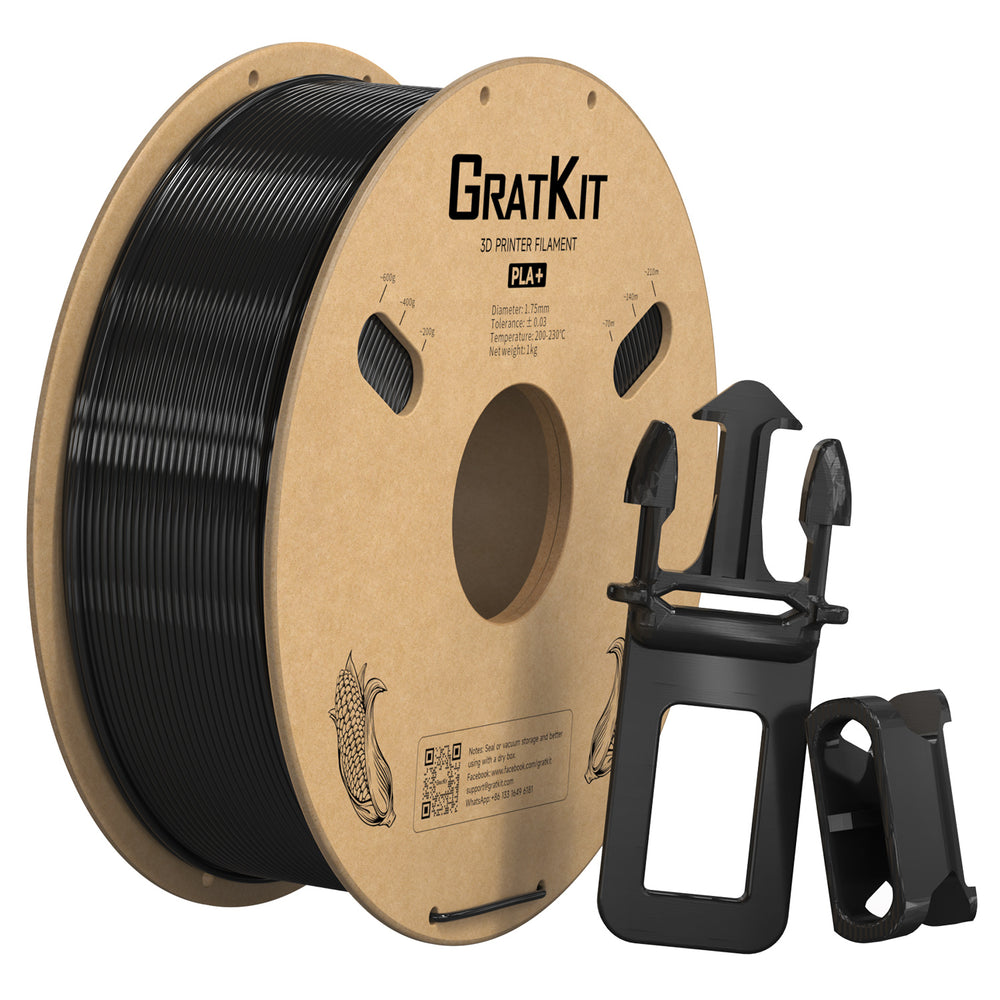Bullet Points:
【Higher Rigidness and Fine Surface】GratKit PLA + Filament 1.75 provides with higher rigidness and fine smooth surface. GratKit PLA+ makes the printed models more lustrous.
【Engineered Precision and Performance】GratKit PLA + 3D Printing Filament offers high dimensional accuracy and consistency. GratKit uses advanced CCD diameter measuring and a self-adaptive control system to control filament output at 1.75(±0.03)mm diameter during the production process.
【Moisture Resistant Pro】GratKit 3D printing filament went through a 24-hour drying process in the thermostatic room before sealed packing. Moreover, GratKit 3D printing filament gets environmental glue attached to the reel to make sure the reel stands longer after unpacking.
【Dust Free Storage】GratKit PLA filament gets a zipper bag included for filament storage after unpacking to keep filament away from dust. It is also recommended to zip the remaining filament together with a desiccant bag in the zipper bag.
【Environmental Packing】GratKit PLA + 3D Printing filament uses recyclable cardboard reels for environmental purposes.
【Industrial Standard Quality】GratKit aspires to gratify demand of smart manufacturing. All products are designed and manufactured with industrial standard quality.
【About Colors】GratKit is offering PLA + 3D printing filament of all colors. We provide OEM and ODM services for customized colors that are not available in the market yet. You are always welcome to contact GratKit with a Pantone serial number or simply the CMYK color numbers.


About PLA PLUS
PLA (Polylactic Acid) and PLA Plus are two types of 3D printing filaments made from the same biodegradable thermoplastic material, which is derived from renewable resources such as corn starch or sugarcane. However, there are some differences between these two filaments that make them suitable for different applications.
The main differences between PLA and PLA Plus are:
Strength and Durability: PLA Plus is a stronger and more durable filament than PLA. It has better interlayer adhesion, which means it is less prone to breaking or cracking during printing or use. This makes PLA Plus a better choice for objects that need to withstand mechanical stress, such as phone cases, toys, and mechanical parts.
Flexibility: PLA is a rigid filament, while PLA Plus is more flexible. This means that PLA Plus is better suited for applications that require some flexibility or elasticity, such as phone cases or other items that need to be able to bend or stretch.
Printing Temperature: PLA Plus requires a slightly higher printing temperature than PLA, typically around 210-220°C. This means that it may not be compatible with all 3D printers and may require some adjustments to the printing settings.
Price: PLA Plus is generally more expensive than PLA due to its increased strength and durability.
In summary, PLA is a great filament for beginners and general-purpose printing applications, while PLA Plus is better suited for more demanding applications where strength and durability are important. However, it is also more expensive and may require some adjustments to the printing settings.
Printing Basic Settings
Nozzle Temperature[℃]: 210±10(All metal hotend+5)
Platform Temperature℃]: 60(PEI) | 65(Glass)
Print Speed[mm/s]: Up to 350
Retract Speed[mm/s]: 40(Direct drive) | 60(Bowden)
Retract Length[mm]: 2.5(Direct drive) | 7(Bowden)
Brim: No need
Download
GratKit PLA PLUS Technical Datasheet
GratKit PLA PLUS Safety Datasheet 259.53kb
GratKit PLA PLUS ROHS 2.04mb
GratKit PLA PLUS REACH 2.83mb
GratKit PLA PLUS Flash point test 551.05kb





















